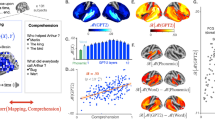Abstract
Machine comprehension deals with the idea of teaching machines the ability to read a passage and provide the correct answer to a question asked from it. Creation of machines with the ability to understand natural language is the prime aim of natural language processing. A machine comprehension task is an extension of question answering technique which provides the machines an ability to answer questions. This task revolutionizes the way in which humans interact with machines and retrieve information from them. Recent works in the field of natural language processing reveal the dominance of deep learning technique in handling complex tasks which suggest the use of neural network models for solving machine comprehension tasks. This paper discusses the performance of code-mixed Hindi data for handling machine comprehension using long short-term memory network and gated recurrent unit. A comparative analysis on the basis of accuracy is performed between the two sequence models to determine the best-suited model for handling this task.
Access this chapter
Tax calculation will be finalised at checkout
Purchases are for personal use only
Similar content being viewed by others
References
Anand Kumar M, Soman K (2016) Amrita-CEN@MSIR-FIRE2016: code-mixed question classification using BoWs and RNN embeddings. In: FIRE (Working notes), pp 122–125
Chung J, Gulcehre C, Cho K, Bengio Y (2014) Empirical evaluation of gated recurrent neural networks on sequence modeling. arXiv:1412.3555
Hochreiter S, Schmidhuber J (1997) Long short-term memory. Neural Comput 9(8):1735–1780
Loatman RB, Post SD, Yang CK, Hermansen JC (1990) Natural language understanding system. US Patent 4,914,590
Rahul Venkatesh K, Anand Kumar M, Soman K (2015) Amrita-CEN_NLP FIRE 2015 language identification for Indian languages in social media text. In: FIRE workshops, pp 26–28
Rajpurkar P, Zhang J, Lopyrev K, Liang P (2016) Squad: 100,000+ questions for machine comprehension of text. arXiv:1606.05250
Ravichandran D, Hovy E (2002) Learning surface text patterns for a question answering system. In: Proceedings of the 40th annual meeting on association for computational linguistics. Association for Computational Linguistics, pp 41–47
Reiter E, Dale R (2000) Building natural language generation systems. Cambridge University Press
Shawar BA, Atwell E (2007) Chatbots: are they really useful? LDV Forum 22:29–49
Sujith Viswanathan AKM, Soman K (2018) A deep learning approach to machine comprehension in code-mixed Hindi language. Int J Pure Appl Math (in press)
Wang D, Nyberg E (2015) A long short-term memory model for answer sentence selection in question answering. In: Proceedings of the 53rd annual meeting of the association for computational linguistics and the 7th international joint conference on natural language processing, vol 2: short papers, pp 707–712
Weston J, Bordes A, Chopra S, Rush AM, van Merriënboer B, Joulin A, Mikolov T (2015) Towards AI-complete question answering: a set of prerequisite toy tasks. arXiv:1502.05698
Zhang J, Zhu X, Chen Q, Dai L, Jiang H (2017) Exploring question understanding and adaptation in neural-network-based question answering. arXiv:1703.04617
Author information
Authors and Affiliations
Corresponding author
Editor information
Editors and Affiliations
Rights and permissions
Copyright information
© 2019 Springer Nature Singapore Pte Ltd.
About this paper
Cite this paper
Viswanathan, S., Anand Kumar, M., Soman, K.P. (2019). A Sequence-Based Machine Comprehension Modeling Using LSTM and GRU. In: Sridhar, V., Padma, M., Rao, K. (eds) Emerging Research in Electronics, Computer Science and Technology. Lecture Notes in Electrical Engineering, vol 545. Springer, Singapore. https://doi.org/10.1007/978-981-13-5802-9_5
Download citation
DOI: https://doi.org/10.1007/978-981-13-5802-9_5
Published:
Publisher Name: Springer, Singapore
Print ISBN: 978-981-13-5801-2
Online ISBN: 978-981-13-5802-9
eBook Packages: EngineeringEngineering (R0)




